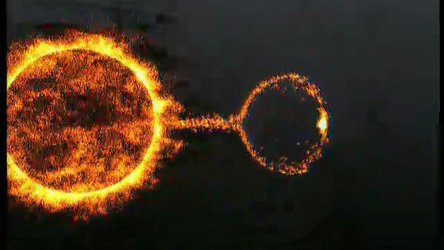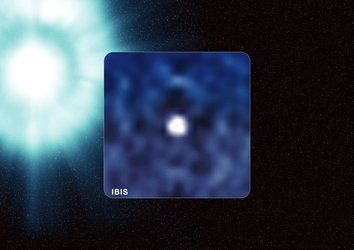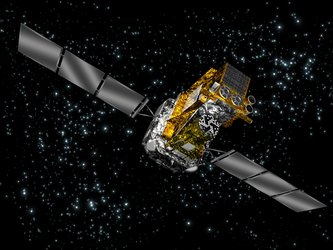Accept all cookies Accept only essential cookies See our Cookie Notice

About ESA
The European Space Agency (ESA) is Europe’s gateway to space. Its mission is to shape the development of Europe’s space capability and ensure that investment in space continues to deliver benefits to the citizens of Europe and the world.
Highlights
ESA - United space in Europe
This is ESA ESA facts Member States & Cooperating States Funding Director General Top management For Member State Delegations European vision European Space Policy ESA & EU Responsibility & Sustainability Annual Report Calendar of meetings Corporate newsEstablishments & sites
ESA Headquarters ESA ESTEC ESA ESOC ESA ESRIN ESA EAC ESA ESAC Europe's Spaceport ESA ESEC ESA ECSAT Brussels Office Washington OfficeWorking with ESA
Business with ESA ESA Commercialisation Gateway Law at ESA Careers Cyber resilience at ESA IT at ESA Newsroom Partnerships Merchandising Licence Education Open Space Innovation Platform Integrity and Reporting Administrative Tribunal Health and SafetyMore about ESA
History ESA Historical Archives Exhibitions Publications Art & Culture ESA Merchandise Kids Diversity ESA Brand Centre ESA ChampionsLatest
Space in Member States
Find out more about space activities in our 23 Member States, and understand how ESA works together with their national agencies, institutions and organisations.
Science & Exploration
Exploring our Solar System and unlocking the secrets of the Universe
Go to topicAstronauts
Missions
Juice Euclid Webb Solar Orbiter BepiColombo Gaia ExoMars Cheops Exoplanet missions More missionsActivities
International Space Station Orion service module Gateway Concordia Caves & Pangaea BenefitsLatest
Space Safety
Protecting life and infrastructure on Earth and in orbit
Go to topicAsteroids
Asteroids and Planetary Defence Asteroid danger explained Flyeye telescope: asteroid detection Hera mission: asteroid deflection Near-Earth Object Coordination CentreSpace junk
About space debris Space debris by the numbers Space Environment Report In space refuelling, refurbishing and removingSafety from space
Clean Space ecodesign Zero Debris Technologies Space for Earth Supporting Sustainable DevelopmentLatest
Applications
Using space to benefit citizens and meet future challenges on Earth
Go to topicObserving the Earth
Observing the Earth Future EO Copernicus Meteorology Space for our climate Satellite missionsCommercialisation
ESA Commercialisation Gateway Open Space Innovation Platform Business Incubation ESA Space SolutionsLatest
Enabling & Support
Making space accessible and developing the technologies for the future
Go to topicBuilding missions
Space Engineering and Technology Test centre Laboratories Concurrent Design Facility Preparing for the future Shaping the Future Discovery and Preparation Advanced Concepts TeamSpace transportation
Space Transportation Ariane Vega Space Rider Future space transportation Boost! Europe's Spaceport Launches from Europe's Spaceport from 2012Latest
Integral Presentation 2003
Three months ago, ESA's Integral Gamma Ray Observatory was launched, 17 October 2002. The spacecraft has now been checked out, calibrated and it is now producing data for hundreds of scientist across the globe. A series of two exchanges programmes will provide an updated presentation on integral, and some early results and images from the mission that show the stunning performance of the instruments. Today's transmission features the updated presentation of the mission. The programme comprises of a 5-minute A-roll with split audio and is complimented by a B-roll with clean international sound.
The video contain:
- 0:30-1:19 ESA's Integral Gamma Ray Observatory was launched onboard a Proton rocket from Baikonur, 10:41 local time in Baikonor, Kazakhstan, 06:41 CEST, 17 October 2002.
- 1:19-1:34 A few days later Integral’s own motors are used to place the satellite into the perfect orbit for gamma ray observations
- 1:34-2:11 ESA built integral is to resolve some of the biggest mysteries in astronomy: it task is to gather gamma rays, the most energetic radiation that comes from space-
- 2:11-2:59 Arvind Palmer, Integral Project Scientist (named Integral Project Manager in the voice) explains what Integral will be looking at, at the gamma rays emitted from some very violent explosions in space.
- 2:59-3:12 Some facts on the Integral spacecraft: 5m high, and more than 4tons in weight. Integral consists of two parts: the service module and the payload module. The service module contains all the spacecraft subsystems. The payload module is mounted on the service module, and contains four scientific instruments.
- 3:12-3:52 Arvind Palmer, Integral Project Scientist, explains that two of the instruments are gamma ray instruments, and he explains what they can do. Then there is an X-ray instruments and an optical monitor, and he explains the extend of observations which these can do together.
- 3:52-4:52 Integral production includes many industrial partners. The video briefly introduce this and presents details on the different instruments, and the technologies used. Names of companies not given, only their nationality.
- 4:52-5:36 Arvind Palmer explains how these instruments work together and what is a normal working day for Integral’s instruments.
- 5:35-6:20 All raw data collected by Integral are sent directly to the ground. After have been put together at ESOC Darmstadt, the data are forwarded for processing at the Integral Scientific Data Centre (ISDC) in Versoix in Switzerland. ISDC distributes then the data to the scientific world.
-
CREDIT
ESA -
LICENCE
ESA Standard Licence
-
Documentary
-
-
-
-

Integral - The Gamma Ray Burst

Gamma-ray burst

Integral - Imaging The Gamma Ray Sky

Integral Index















 Germany
Germany
 Austria
Austria
 Belgium
Belgium
 Denmark
Denmark
 Spain
Spain
 Estonia
Estonia
 Finland
Finland
 France
France
 Greece
Greece
 Hungary
Hungary
 Ireland
Ireland
 Italy
Italy
 Luxembourg
Luxembourg
 Norway
Norway
 The Netherlands
The Netherlands
 Poland
Poland
 Portugal
Portugal
 Czechia
Czechia
 Romania
Romania
 United Kingdom
United Kingdom
 Slovenia
Slovenia
 Sweden
Sweden
 Switzerland
Switzerland

























